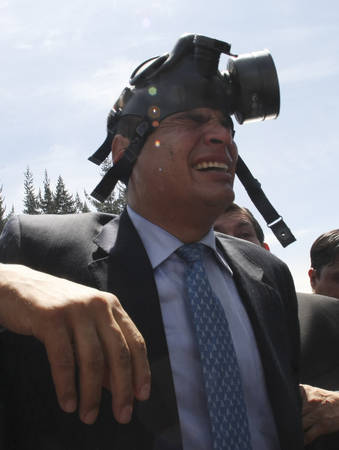Poverty, homelessness, family violence,
and, most importantly, an emerging market, are fueling the growth
of child prostitution in Ecuador, according sociologists here.
Some 6,000 boys and girls between 10 and 15 years old, are now
engaged in prostitution in "date houses," bars, massage parlors,
and discos in Quito and Guayaquil, they said.
"This is not a problem concerning a certain sector of the
population, nor a gender problem...rather, it is a growing
phenomenon, like poverty, and it is sustained by a large market
which demands child sex
Children from Ecuador are trafficked into Venezuela to serve as prostitutes and work as street vendors and housemaids. The victims are usually children who are kidnapped, sold by their parents, or deceived by false employment opportunities. These children are first exploited through prostitution at the average age of 12. Children as young as 7 years old have been found to be sexually exploited.
"Venezuela is a country of destination for women for commercial sexual exploitation." Victims are recruited through job advertisements in major newspapers.Once gathered, these victims are trafficked abroad, "where their passports are taken away and they are prostituted in massage parlors and brothels."
Women and children are also trafficked into Venezuela. Children from Ecuador are trafficked into Venezuela to serve as prostitutes and work as street vendors and housemaids.The victims are usually children who are kidnapped, sold by their parents, or deceived by false employment opportunities. These children are first exploited through prostitution at the average age of 12. Children as young as 7 years old have been found to be sexually exploited. Of the 40,000 sexually exploited children in Venezuela, 78% are girls between the ages of 8 and 17.
Some 2,000 Girls Working as Prostitutes in Quito
Some 2,000 girls ranging in age from 11 to 16 work as prostitutes in Quito and a similar number are selling sex in the port city of Guayaquil, the Quito daily La Hora reported Monday. Poverty and a lack of employment opportunities are among the principal reasons why a growing number of minors are turning to prostitution in Ecuador, La Hora said.
The girls work in bars, cabarets, massage parlors, discotheques, brothels, strip-tease clubs and on the street, the newspaper said.
The precise number of underage girls working as prostitutes is impossible to calculate because many of the places employing underage prostitutes deny having minors working for them or hide juvenile workers, the newspaper said.
La Hora said the prostitution of minors also fuels other social problems including unwanted pregnancy, venereal disease, AIDS, drug and alcohol addition and crime.
Underage sex, driven by poverty, lures paedophile gringos to a place in the sun.
This city, on the north-east of Ecuador, is rich in indigenous culture, and rife with underage sex. Driven by poverty and lured by the prospect of wealthy gringo customers, girls as young as 12 prostitute themselves for as little as $2. "But I am already too old," says Adrianna, a pretty 17-year-old who has been working since she was 12. "Gringos prefer girls between 10 and 14."





























